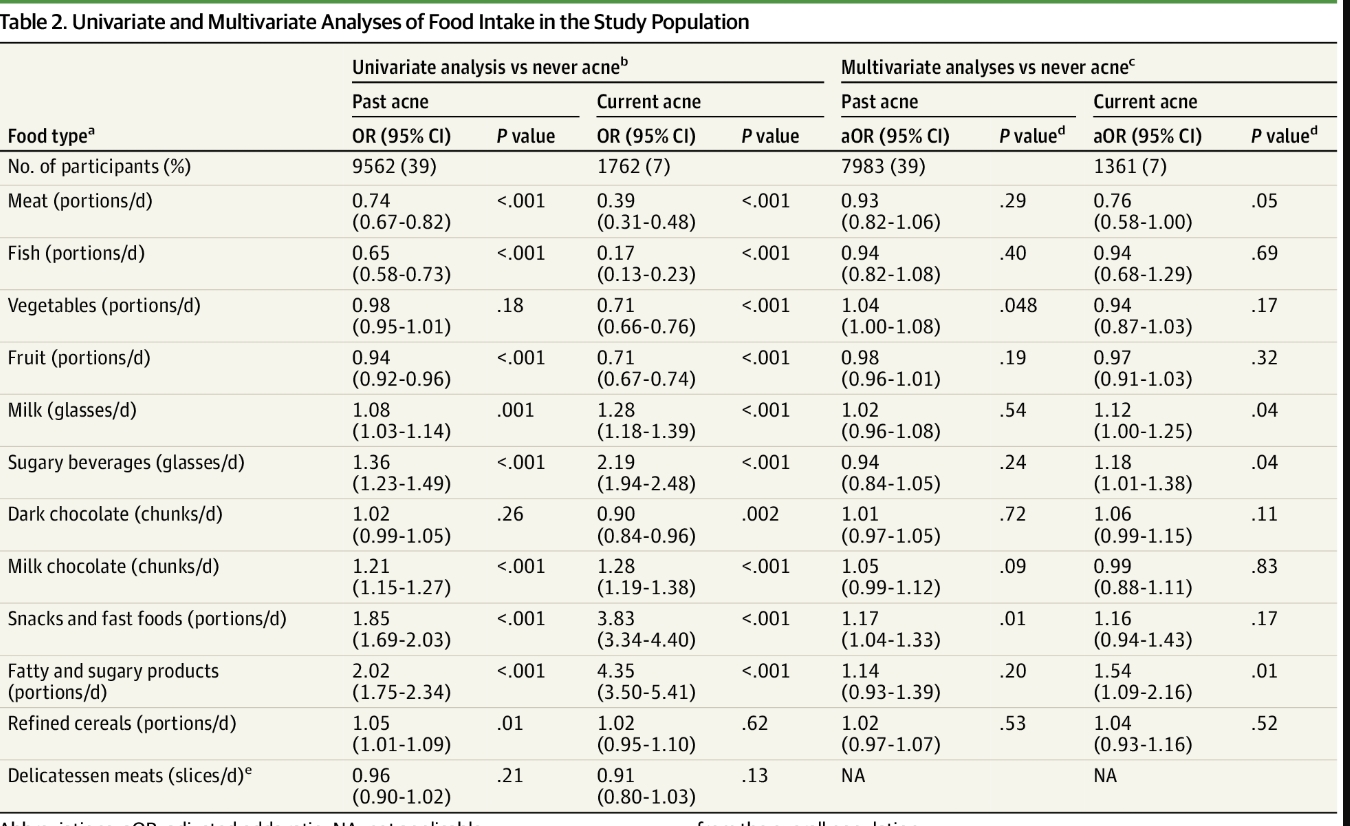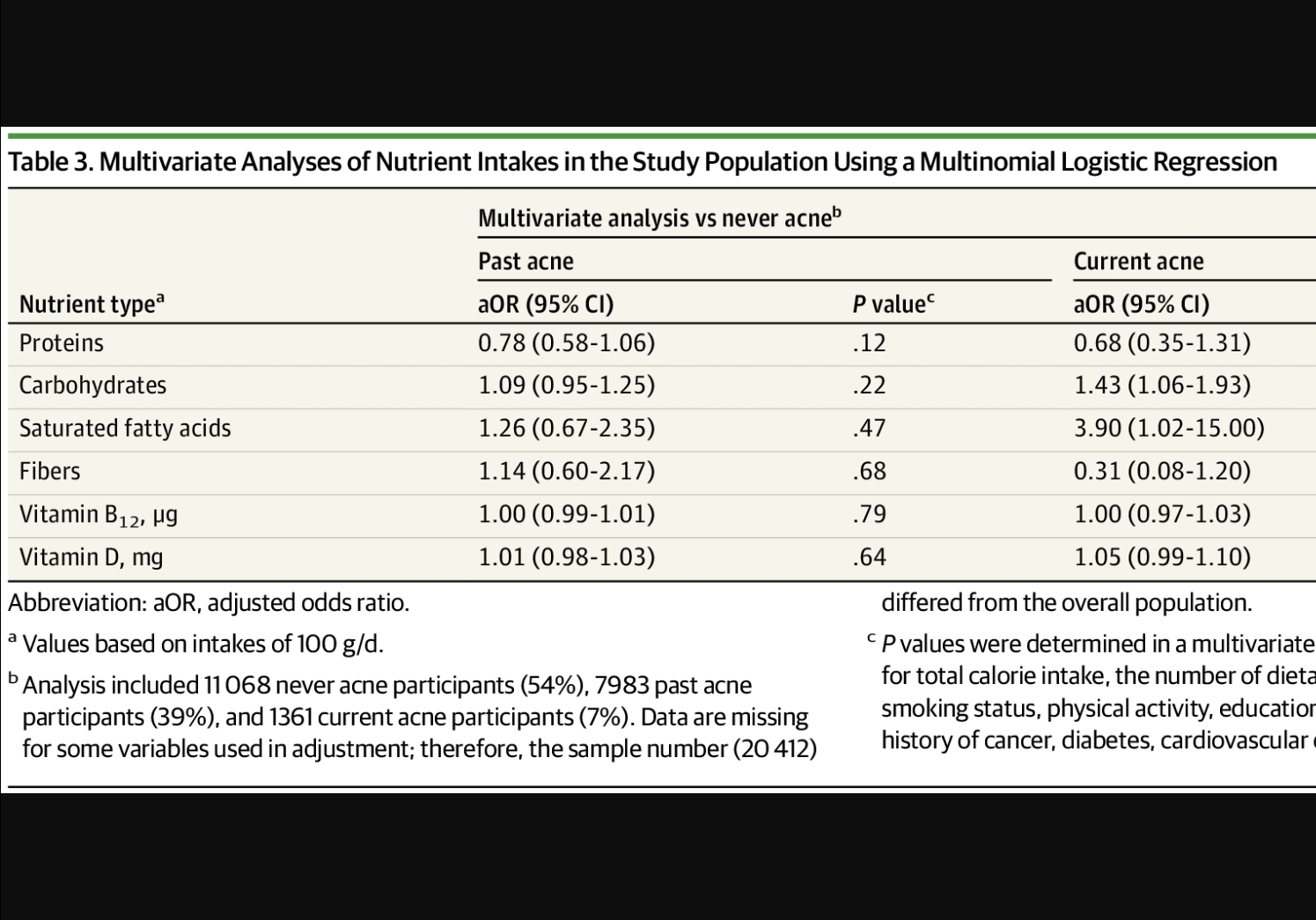Association Between Adult Acne and Dietary Behaviors
Findings From the NutriNet-Santé Prospective Cohort Study
Laetitia Penso JAMA Dermatol. Published online June 10, 2020.
Key Points
Question Is dietary behavior associated with acne in adults?
Findings In this cross-sectional study of 24 452 participants in the French NutriNet-Santé study, the consumption of fatty and sugary products, sugary beverages, and milk was associated with current acne in adults. This association was noted after adjustment for sociodemographic variables and confounding factors, including daily energy intake, the number of dietary records completed, and depressive symptoms.
Meaning These findings suggest that a Western diet (ie, rich in animal products and fatty and sugary foods) is associated with the presence of acne in adults.
Abstract
Importance Acne is a chronic, multifactorial inflammatory disease. The association between consumption of dairy products and fatty and sugary foods and occurrence and progression of acne remains unclear.
Objective To assess the association between dietary behavior and current acne in adults.
Design, Setting, and Participants A cross-sectional study was performed as part of the NutriNet-Santé study, which is an ongoing observational, web-based cohort study that was launched in France in May 2009. The present study was conducted from November 14, 2018, to July 8, 2019. A total of 24 452 participants completed an online self-questionnaire to categorize their acne status: never acne, past acne, or current acne. Associations between dietary behavior (food intake, nutrient intake, and the dietary pattern derived from a principal component analysis) and current or past acne were studied in multinomial logistic regression models adjusted for potential confounding variables (age, sex, physical activity, smoking status, educational level, daily energy intake, number of dietary records completed, and depressive symptoms).
Results The 24 452 participants (mean [SD] age, 57 [14] years; 18 327 women [75%]) completed at least 3 dietary records. Of these, 11 324 individuals (46%) reported past or current acne. After adjustment, there was a significant association between current acne and the consumption of fatty and sugary products (adjusted odds ratio [aOR], 1.54; 95% CI, 1.09-2.16), sugary beverages (aOR, 1.18; 95% CI, 1.01-1.38), and milk (aOR, 1.12; 95% CI, 1.00-1.25). An energy-dense dietary pattern (high consumption of fatty and sugary products) was associated with current acne (aOR, 1.13; 95% CI, 1.05-1.18).
Conclusions and Relevance In this study, consumption of milk, sugary beverages, and fatty and sugary products appeared to be associated with current acne in adults. Further large-scale studies are warranted to investigate more closely the associations between diet and adult acne.

















